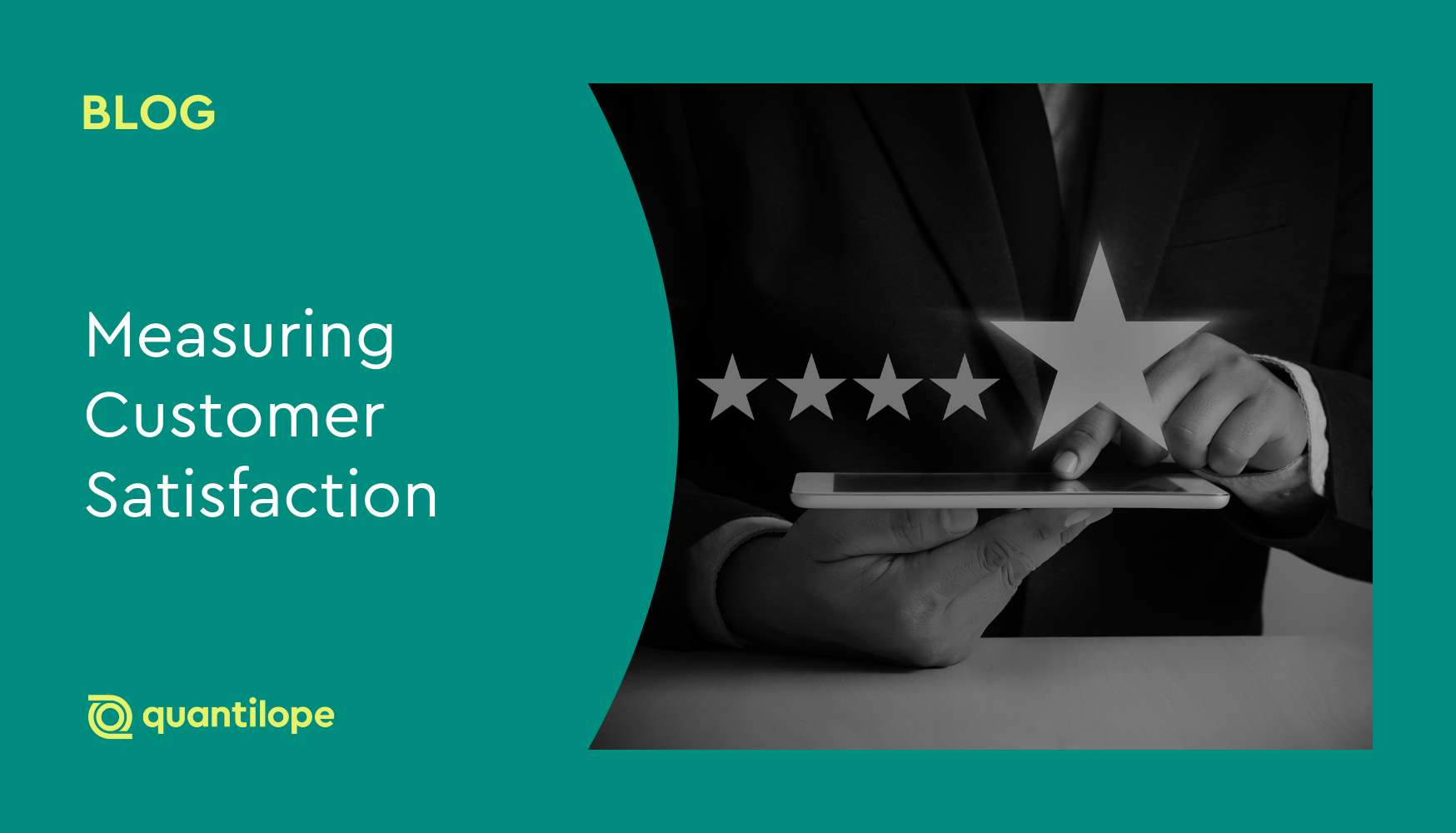How to measure customer satisfaction
Brands can measure Customer satisfaction can be effectively measured through multiple research methods that capture both direct feedback and behavioral insights. The most reliable approach combines survey-based metrics with social media monitoring and customer behavior analysis to create a comprehensive understanding of customer sentiment and experience quality.
Key measurement methods include targeted surveys using established metrics, social media monitoring for real-time sentiment tracking, and behavioral analysis through customer interaction data. Essential metrics for measuring satisfaction include Customer Satisfaction Score (CSAT) for immediate satisfaction feedback, Net Promoter Score (NPS) for loyalty assessment, and Customer Effort Score (CES) for evaluating the ease of customer experiences.
- Customer Satisfaction Surveys (CSAT): Directly asks customers to rate their satisfaction with a specific interaction or overall experience on a scale (i.e., 1-5)
- Customer Effort Score (CES): A measure of how much effort a customer feels they had to expend to resolve an issue or achieve their goal with your company
- Net Promoter Score (NPS): A metric that asks customers how likely they are to recommend your product or service to others, categorizing them as Promoters, Passives, or Detractors
- Churn rate: Measuring the percentage of customers who stop using your product or service during a specific time period
- Social media monitoring: Tracking mentions, comments, and reviews on social media for valuable insights into customer sentiment and opinions
- Customer reviews and testimonials: Online reviews and testimonials that offer a glimpse into how customers perceive your brand and offerings
- Customer interviews and focus groups: Engaging in direct conversations with customers to uncover deeper insights into their needs, preferences, and pain points
Back to Table of Contents
Key customer satisfaction metrics
Below are some of the commonly used metrics to go about measuring customer satisfaction:
Customer satisfaction score (CSAT)
A customer satisfaction score (CSAT) measures how satisfied customers are with your brand's products, services, or specific experiences. This widely-used metric helps businesses gauge customer happiness by asking customers to rate their satisfaction on a scale - typically from 1 to 5 - then calculating the percentage of positive responses (such as ratings of 4 and 5).
CSAT scores are represented as percentages, with standard benchmarks varying from industry to industry. To gather these percentages, brands simply ask their customers in a CSAT survey: 'How satisfied are you with [brand's] products or services'? The exact wording of the question isn’t rigid, you just want to make sure you are asking about satisfaction and providing respondents with a scale of answers to choose from (perhaps from ‘extremely satisfied’ to ‘not at all satisfied’). Regardless of your scale, make sure that there is an easily identifiable top-two-box (T2B) representing the two most positive sentiment scores on the scale (i.e. ‘extremely satisfied’ and ‘very satisfied’).
To calculate a CSAT score, you would simply take the total number of satisfied customers (those who responded with T2B scores) and divide that number by the total number of survey responses, then multiply by 100 to get the percentage of satisfied customers for your brand.
Customer effort score (CES)
While a customer satisfaction score measures how satisfied consumers are with an actual product or service, customer effort scores (CES) measure how much effort a customer must exert to accomplish a specific task related to your brand - such as checking out online, finding a product in store, accessing customer support, etc.
Customer effort scores are helpful for brands to measure, given that consumers tend to be more loyal customers to brands that are easy to interact with. CES scores are important to measure over time to ensure you’re not getting a misrepresentation of a customer’s experience with your brand. For example, a customer may have historically seamless interactions shopping on your website, but one time they had internet connectivity issues and that happens to be right before they took your survey. That one representation would not be accurate of their overall experience with your brand’s website.
To capture customer effort scores, time it right so that you are asking close in time to when a customer interacted with your brand (such as after they check out in-store or buy something online). You can simply ask ‘How easy was your interaction with [brand] today?’ or something along those lines. While CSAT is represented as a percentage, CES is typically represented as a number between the range of 0-100. There’s no benchmark to use for CES as the scale will often vary depending on the brand - some may use emojis such as smiles to represent numbers in a scale, some may use a 5-point scale, and others may use a 10-point scale. Whichever scale you use, simply take the total sum of responses (the scores in the scale) ÷ (Number of responses) to arrive at your CES score.
Net promoter score
Customer satisfaction is often measured through something called a Net Promoter Score (NPS). The net promoter score determines how likely customers are to promote your brand, product, or service to others through word-of-mouth. NPS is a single survey question that, like CSAT and CES uses a scale to ask respondents how likely they would be to recommend your brand.
NPS is typically calculated with a 10-point scale, and those who select a 9 or 10 are considered ‘promoters’ of your brand, product, or service. Promoters are those you can consider your happy customers. Contrarily, those who answer a 6 or lower are typically considered ‘detractors’ of your brand, product, or service, and those who score a 7 or 8 are considered ‘passive’ - neither a promoter nor a detractor.
To calculate your NPS score, subtract the percentage of detractors from the percentage of promoters. For example, if 30% of respondents are detractors, 10% are passives and 60% are promoters, you would subtract 30% from 60% for a total Net Promoter Score of 30. As long as your NPS is above 0, you can consider it good - being that the number of detractors does not exceed the number of promoters of your brand.
The great thing about NPS is that it is a widely known metric, and has a fairly consistent reporting scale (typically ranging from -100 to +100), unlike CSAT and CES which can be more subjective to each brand. Because they measure different things, NPS can be used in conjunction with these other satisfaction metrics in a customer satisfaction survey. Brands might also incorporate NPS into a brand tracking survey for a consistent read over time.
Churn rate
Churn rate is the rate at which you lose customers from your customer base. This could be for a variety of reasons, such as aging up, loss of interest, budgetary concerns, or satisfaction with your product/service. While brands might desire to have no churn at all, it’s not realistic. Over time you’re going to lose some existing customers and gain some new customers, so measuring churn rate is an important metric to keep track of to understand brand performance.
Calculating the churn rate of customers is simple - take the number of customers you start with at the beginning of a given month, subtract the number of customers you end with that month, and divide that sum by the customers from the beginning of the month.
So, let’s say you have 180 customers at the start of September and only 150 customers at the end of September. Your churn rate would be ((180-150)/ 180) for a 17% customer churn. This metric can be used to keep tabs on customer satisfaction levels - if you’re experiencing a high churn rate, it could be a good idea to check in on other satisfaction metrics to see what’s potentially contributing to your loss of customers.
Back to Table of Contents
Methods of measuring customer satisfaction
So, how do you put these satisfaction metrics into practice? Below are a few common ways of capturing customer satisfaction:
1. Online surveys
Online customer satisfaction surveys are a great way to get quick, measurable customer insights into overall satisfaction with your product/service. Online surveys can be created and distributed quickly to get insights in real-time or very soon after a new product launch.
To measure customer satisfaction using an online survey, brands can incorporate many of the metrics mentioned above - CSAT, NPS, etc. Additionally, brands can ask follow-up quantitative questions to gain more context around their customer experience, or even ask open-ended questions to gather detailed responses.
Typically, online surveys include an upfront demographic section that can screen out participants based on the target group a brand is looking to measure. With customer satisfaction surveys, brands can choose to send an online survey link only to their own list of customer emails (if available) or add a screening question to their survey to ensure that the respondent is a current customer of their product/service. Companies might also route customers to their online survey through an in-app or online pop-up notification asking for participation.
Online surveys are a great type of survey to leverage when you have a good idea of the audience you want to reach, when you want to reach a large number of customers, and when you want to leverage quantifiable satisfaction metrics.
Brand health metrics can also be helpful to measure over time to paint a wider picture of customer satisfaction insights:

2. Social media
Social media platforms can be used to collect data for measuring customer satisfaction. The easiest form of social media satisfaction measurement is through customer feedback comments on branded social posts. You can monitor brand posts to see if customers are complaining about your product, mentioning their likes/dislikes with certain features, or praising your product as happy customers.
Customers might also flock to social media post-purchase of your product/service to share their experience with it, so monitoring tags of your brand is also useful for understanding customer satisfaction.
While the above forms of social media satisfaction measurement are more passive in nature, brands can also leverage social media to directly ask satisfaction metrics. An example might be leveraging a poll on Twitter or LinkedIn, or using a voting/polling feature on Instagram.
3. Email surveys
Email surveys are another great format for measuring customer satisfaction. This type of survey takes a list of emails - such as a newsletter subscriber list or purchase history information and sends out questions to those contacts. Email surveys are often used as a means of delivery for online surveys - redirecting recipients to a survey link.
Email surveys provide an easy way to track response rate, based on the number of emails sent out and the number of completes you’ve captured.
4. Live chat
You may have been on a website before and seen an icon at the bottom corner asking if you want to live chat with a customer service agent. Live chat is a great way to provide service to your customers, and relatedly, to measure satisfaction with the level of service a customer received.
Live chat surveys might ask simple questions such as ‘please rate the level of customer service you experienced today'. Using live chat is a great touchpoint for capturing customers who are already on your site.
Back to Table of Contents
Measuring customer satisfaction with quantilope in 5 easy steps
quantilope’s Insights Automation Platform is equipped to measure customer satisfaction in a variety of formats - through a dedicated CSAT survey, NPS survey, as part of an existing brand tracker, or even through the use of quantilope’s new video research solution: inColor.
With quantilope, measuring customer satisfaction is quick and seamless with just a few simple steps:
1. Define your goals
Before launching a customer satisfaction survey, start by defining your goals. What are you hoping to gain from the satisfaction survey results? Do you want to know your churn rate? Do you want to understand specific areas of your product/service that customers are unhappy with? Do you want to know how many customers would promote your product/service to others through word-of-mouth? Are you seeking general customer sentiment around your brand? These are all important questions to start with, to understand how to go about setting up your survey with the appropriate customer satisfaction metrics.
2. Choose your customer satisfaction metrics
Using the goals defined in step one, choose the appropriate satisfaction metric that will answer the questions you have in mind. NPS will answer how many brand promoters you have, CSAT will capture current customer satisfaction, CES measures the effort customers must take to complete an action related to your product/service, and churn rate will measure how many customers you are retaining/losing in a given time period.
3. Create your survey
Upon finalizing your survey goals and the customer satisfaction metrics you want to use, you can begin to build your survey through simple drag & drop functionality on quantilope’s platform. Drag in pre-programmed metrics such as NPS right into your survey, or build your own satisfaction questions from scratch using templated scale questions.
4. Review the survey data
Upon capturing your survey data, review your satisfaction metrics to see where your brand is performing well and where there may be room for improvement. If using NPS, see how many promoters of your brand you currently have, along with how many detractors. Similarly, look into CSAT scores and analyze if a certain demographic of consumers is more likely to be satisfied than others.
5. Act on the insights
Finally, act on your customer satisfaction insights. If you noticed that many of your detractors or unhappy customers are say, younger, perhaps you want to work up a marketing campaign that caters to these younger audiences through social media, brand collaborations, etc. Or perhaps you were surveying internal employees on their satisfaction at the company and received feedback about the lack of training they had; building extensive training into the onboarding process could elevate those metrics over time.
Back to Table of Contents
Benefits of measuring customer satisfaction
Measuring customer satisfaction is not merely a feel-good exercise; it lets a brand know precisely how its consumers are feeling, where they might be able to improve, and how they can drive growth and profitability going forward. In investing the time and resources to measure customer satisfaction, businesses are likely to enjoy:
- Improved customer retention: Satisfied customers are more likely to stay loyal to your brand, reducing churn rate and the costs associated with acquiring new customers. By understanding and addressing customer concerns, you can foster long-term relationships and increase customer lifetime value.
- Enhanced product/service development: Collecting and considering customer satisfaction feedback provides valuable insights into need gaps, preferences, and pain points. This information can guide new product/service improvements, ensuring you deliver what customers truly want and seek out.
- Competitive advantage: Companies that prioritize customer satisfaction differentiate themselves from the competition. A reputation for excellent customer service can attract new customers, top business talent, and even new investors and partners.
- Increased revenue: Satisfied customers are more likely to make repeat purchases and recommend your brand to others, driving organic growth and increasing business revenue. By meeting (and even exceeding) customer expectations, you create loyal advocates who become some of your best marketers.
- Reduced costs: Addressing customer issues proactively can prevent escalation and costly problems down the line. Satisfied customers are less likely to complain or require extensive support, saving valuable resources and time.
- High company morale: While customer satisfaction is directly related to those who buy your products/services (aka, your customers), having a high customers satisfaction reputation can also positively impact company morale! Happy customers often make for happier employees.
Back to Table of Contents
Customer satisfaction measurement software
While there are numerous software tools on the market that help businesses measure customer satisfaction, quantilope's Consumer Intelligence Platform streamlines the entire process through automation and innovative features like its AI co-pilot, quinn.
Researchers that opt to use quantilope for their customer satisfaction measurement will appreciate the platform's:
- Flexibility and customization: Tailor surveys to your specific needs by customizing a pre-built template or by building a totally custom survey through drag-and-drop modules
- Advanced, automated methods: quantilope offers the largest suite of automated, advanced methods that go beyond surface-level insights
- Real-time results: Access customer satisfaction results as soon as respondents complete your survey (and get a jump start on analysis too!)
- Actionable recommendations: Receive data-driven guidance from the platform's AI co-pilot, quinn, which can generate chart headlines and dashboard summaries in just seconds
- Dedicated support: quantilope's team of Research Consultants will guide and inspire you throughout the end-to-end research process to ensure an actionable final outcome from your customer satisfaction project
With quantilope, brands can confidently measure customer satisfaction, uncover valuable insights in real-time, and transform their customer experience into one that's future-proof and highly competitive.
To learn more about how quantilope can help with your customer satisfaction survey needs, get in touch below.





